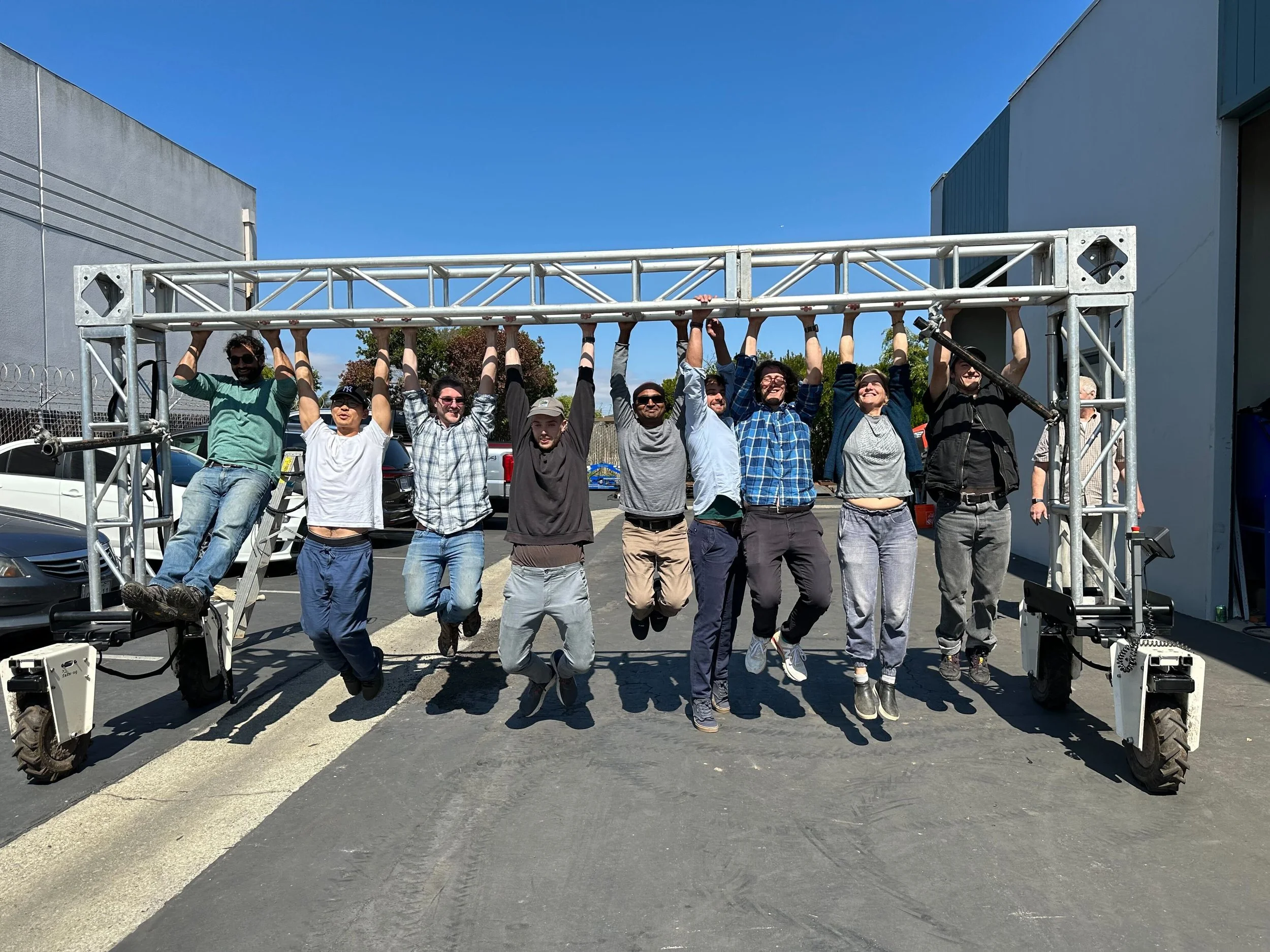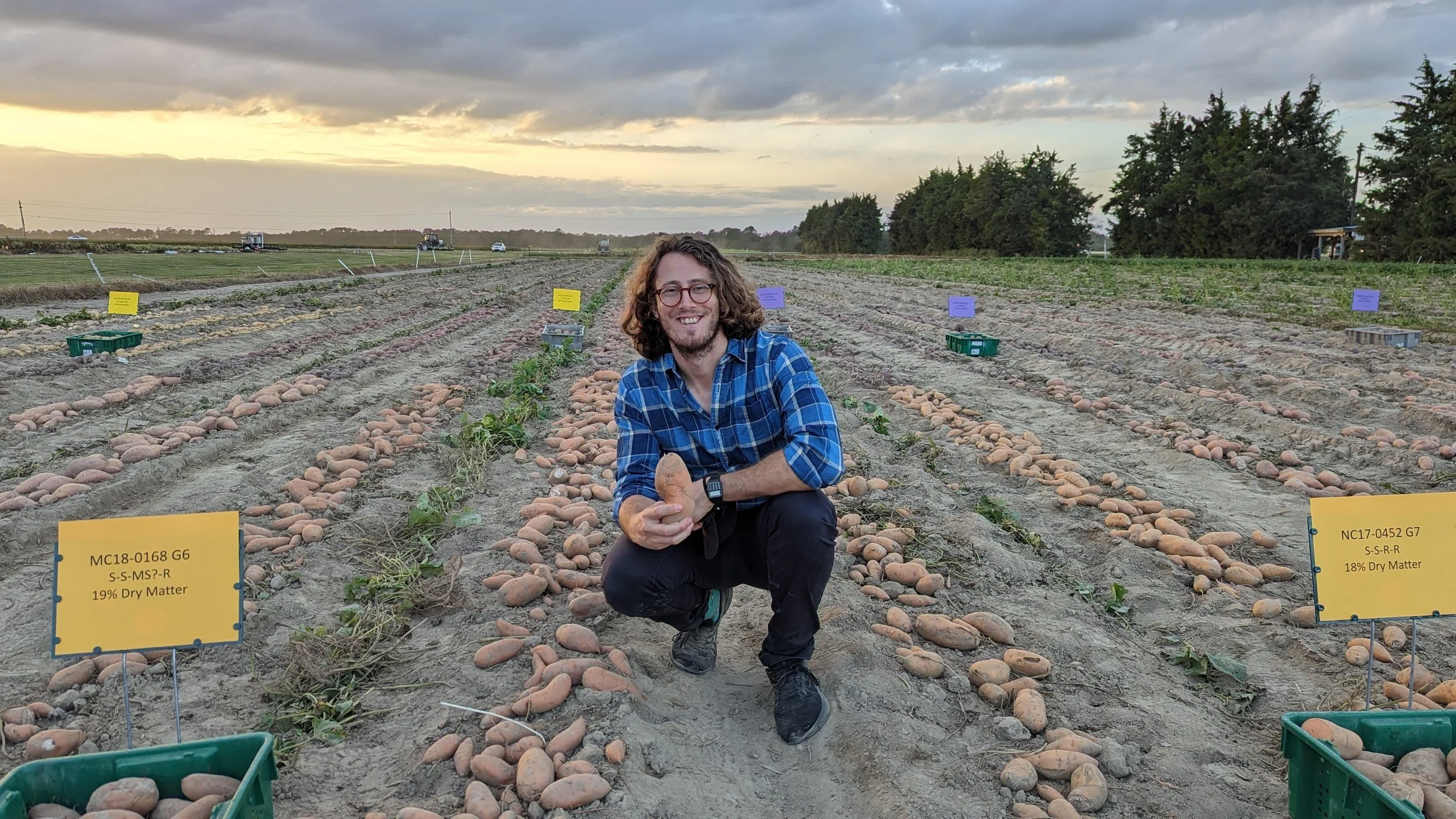Dr Wesley Moss: PhD and Fulbright Scholar
CEI:AgER welcomes home Dr Wesley Moss, the second member of the team to embark on a Fulbright scholarship to the USA. Wesley’s Fulbright from January to December 2023 landed him in North Carolina working with the Precision Sustainable Agriculture (PSA) network – a collaboration led by North Carolina State University and the USDA Agricultural Research Service (ARS). While the 10 months he spent based in North Carolina, dispersed with trips to Maryland, California, and Florida, was not quite long enough to develop a southern American accent, it was enough time for a life changing experience.
“If you get the opportunity, go on a Fulbright,” Dr Moss recommends. As he explains, it was not only a valuable experience due to the skills he built working with PSA under directors Dr Chris Reberg-Horton and Dr Steven Mirsky, but also in the relationships he developed with his fellow collaborators. “Particularly as an early career researcher, it’s hard to build those international connections. But now I’ve spent a year meeting people and forming relationships.” Since returning just a month ago, Wesley has set the wheels in motion to establish a formal partnership to continue collaborations with his US colleagues, strengthening ties between CEI:AgER/UWA, NC State University and USDA ARS.
Wesley and colleagues from PSA
On leaving for his Fulbright, Dr Moss had recently completed his PhD in Mechanical Engineering and Agriculture. As the only mechanical engineer in his team at PSA, he provided a unique set of skills amongst the software engineers, plant scientists, and agronomists. Wesley was able to complement their work on robotics and machine vision with his knowledge of building sound mechanical systems while collaborating on a precision weeding system.
The team were working on precision weeding to recognise small weeds close to crop plants and micro-dose them with herbicide, which reduces chemical usage (up to 95%) for cost, health, and environmental reasons. This method contrasts with the more common practise of non-selective spraying of whole fields. In return, Wesley developed skills in a plethora of areas including programming, machine vision, electronic engineering, and the integration of mechanical and robotics systems. He intends to continue work in this space, in which CEI:AgER hopes to see a new member of the team arrive in 2024 in the form of an agricultural weeding robot.
Potential new colleague (left) and Wesley Moss (right)
In addition to his main post-doctoral responsibilities, his trip was enriched with a variety of other experiences including teaching, attending interstate conferences, and visiting startups across California via a scenic route from San Francisco to Monterey Bay. He gave several guest lectures about technology and agriculture in Australia, informing students there is more to Australia than vegemite, kangaroos, and fires (we also have extremely large farms). The famous sheep shearing robot was of course mentioned, a brilliant invention led by UWA’s Emeritus Professor James Trevelyan (and proudly displayed at the CEI:AgER premises at Shenton Park). Other highlights included visiting the “Salad Bowl” of America, attending rodeos, and experiencing farming in a different environment, culture, and perspective.
Wesley at a sweet potato farm
Wesley’s Fulbright experience was an extraordinary ten months of career development and personal growth, with exciting times ahead to continue work in a vibrant, growing space alongside collaborators across the globe. To anyone thinking about applying for a Fulbright, his advice is simple: “Definitely do it. I don’t know anyone who went and regretted it.”
For anyone thinking about embarking on a similar journey through Fulbright, Wesley has the following main tips:
1. Prepare early: the process can take months to years. In Wesley’s case, the time between applying and leaving for the USA, was close to 18 months.
2. Identify collaborators in advance: for post-doc applicants, the application requires the collaborating team in the USA to be identified and in agreement, which is a task to be done by the applicant.
3. Figure out how the opportunity fits into and advances your career trajectory.



